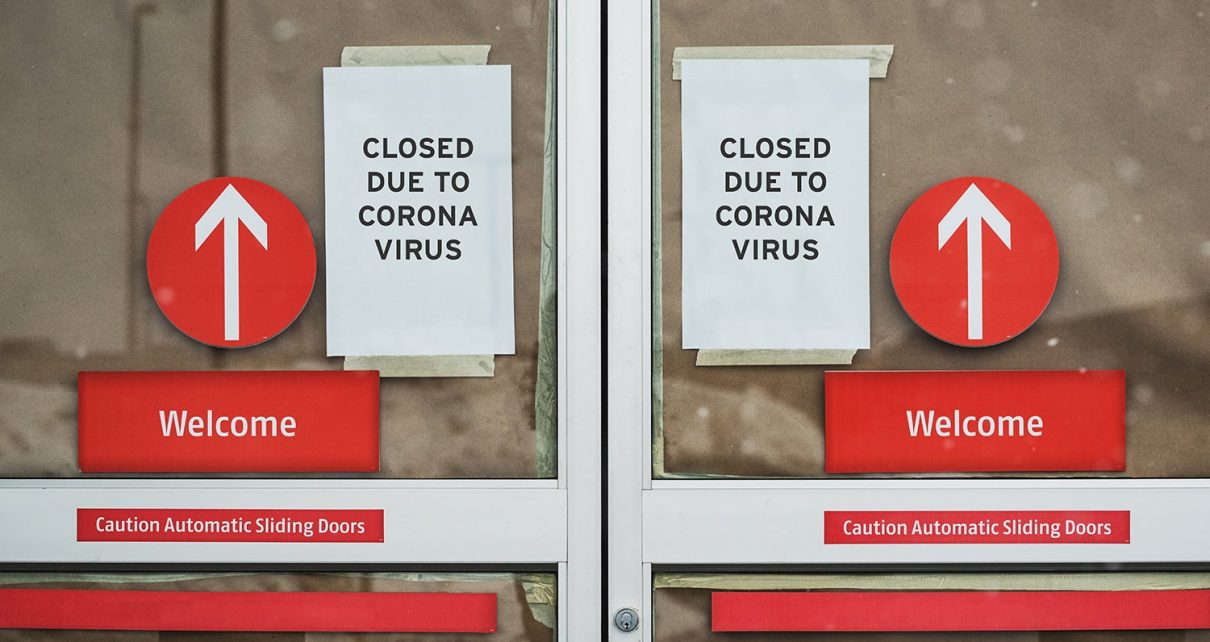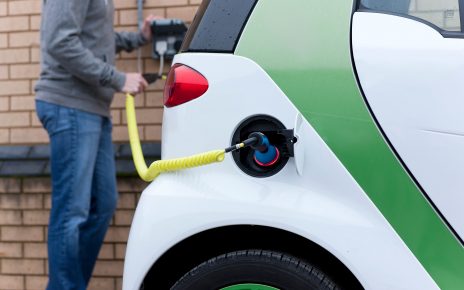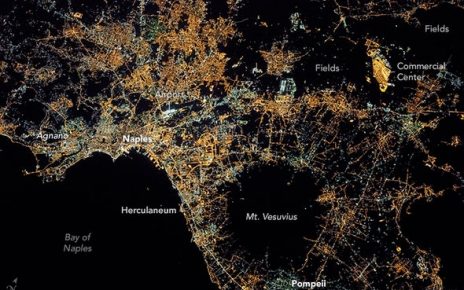With much of the country grinding to a halt in a desperate attempt to slow the spread of the new coronavirus, many people are wondering when the U.S. will be able to “reopen.”
The American Enterprise Institute, a public policy think tank, recently released a report co-written by former U.S. Food and Drug Administration commissioner Scott Gottlieb that offers a four-phase “road map to reopening.” The first phase—which the U.S. is currently in—involves slowing the spread of new infections with physical distancing measures, such as closing schools and having people work from home. In the second step, individual states can reopen when they have the capacity to identify, test and isolate most people with COVID-19 and their close contacts—but some distancing will still be required. In the third, remaining restrictions can be lifted when an effective therapy or vaccine becomes available or when data show widespread immunity. The final stage, after the current pandemic is over, will be to invest heavily in research and health care to prepare for the next one.
Tom Inglesby, director of the Center for Health Security at the Johns Hopkins Bloomberg School of Public Health—and an expert on pandemic preparedness—provided input for the report and helped to review it. Scientific American spoke with Inglesby about some of the most important criteria the country must meet before it can reopen. These include consistent declines in new cases, widespread testing and case tracking, adequate supplies of protective gear for health care workers and the use of nonmedical masks by the public.
[An edited transcript of the conversation follows.]
What are some of the key things that have to happen before we can safely lift the restrictions on society?
Number one: any given state that’s considering relaxing social distancing should have a demonstrated downward trend in cases over the two weeks prior. And we need to get better at being able to evaluate trend data across the country. Ultimately it would be good to have more data that would allow decision makers to be able to look at neighboring states and make sure they’re congruent with others in the region.
The second thing is extensive diagnostic testing capability. Right now we’re focused on the sickest patients—as we should be—in hospitals and long-term care facilities and health care workers. But we need to get to a point where anybody who’s got symptoms consistent with COVID-19 can get a test and have results in the same day. We should also be developing a serology initiative. [Editor’s Note: Serological, or antibody-based, tests could reveal whether a person has previously been infected with COVID-19 and may have some immunity.]
Number three is having personal protective equipment in sufficient quantities within your state to cover current and anticipated needs so that doctors and nurses and hospital staff are ready for the potential rise in patients that could follow a relaxation of social distancing. So the health care system should be prepared in terms of equipment, but, also, we need to have more capacity to care for very sick people.
And finally, the last important element is the capacity for a state to do very rapid case finding: isolation, contact tracing and case management. That is what officials and health care workers have been doing very intensely in Asia in the past couple of months. Those are the kinds of conditions, I think, that would make it safer for states to begin to relax social distancing. You try to, perhaps, lift one set of measures, see what the impact is, see if we can continue to keep control of the outbreak in the provision. And if things collapse, and cases start to go up substantially, then you need to go back to the earlier phase.
In terms of the trend in cases, are you talking about a significant decrease over a period of two weeks in a state’s number of new reported infections?
Yes. So basically, you know, if the state has 500 new cases at its peak in a day, then the target should be that, for two weeks in a row, new cases drop daily—450, 400, 350, 300. You know, basically getting down to hopefully small numbers of cases, right? We didn’t put an absolute number in there—it would be too difficult to know, because the states vary largely in size. But it ideally should be absolute numbers that are pretty low from the start so that there’s not a high chance for a major reeruption in cases.
Given the shortage of testing and data, how would we know that those trends are actually real? Maybe we would just see what looks like a downward trend because fewer people are getting tested.
Yeah, that’s a really important point, which is why we really need to have rapid testing in place for people who have outpatient-level symptoms that could be COVID-19. And because COVID-19 can look like the run-of-the-mill flu, a test has to be available in a way that it is not for flu testing. With flu, we don’t need to know when people have very mild symptoms. In this case, we really do need to know. You should get tested. And right now we’re far away from that. But it’s imaginable. There are rapid tests that are coming online. The Abbott test takes five minutes. One of the other rapid tests takes 45 minutes.
You mentioned serological testing, which could tell us who has been exposed to the virus. Is it realistic to think that we might have that capability available anytime soon?
Yes, I think it is realistic. I think there are a number of companies. For example, I just got an announcement today that there’s a global health care distributor called Henry Schein. They announced recently that they are selling an antibody rapid test at point of care that delivers results within 15 minutes.
Could this type of test tell us if people have had the illness and are immune—and could go back to work safely, for instance?
That is the aspiration. I think, at this point, there needs to be a bit more definitive decision-making and scientific judgment by national health authorities—the Centers for Disease Control and Prevention and the National Institutes of Health—about whether we have sufficient evidence to call it immunity. But in general, the thought is that it’s likely to be an indicator of immunity at some level. We don’t know how long that necessarily will last. But at least it’s certainly better than if you’ve not had the disease—that’s the hope. And once that’s definitively called out, then I think it could become the kind of thing where people would have evidence that they could more safely be back in the world without being at risk themselves or endangering others.
You also said states must have enough protective equipment to meet the needs of doctors and nurses. Do you mean we shouldn’t lift the restrictions until we have it in place?
I think we owe that to our health care workforce. If we lift the restrictions and risk rising cases again without being prepared in our hospitals, we have the potential to expose our doctors and nurses to the same thing that they’re going through now—which is basically a crisis. In many places, they’re not well protected or they’re running out of equipment. So we need to make sure that the supply-chain problems have been sorted out before we begin to experiment with lifting social distancing.
There has been a lot of debate recently about whether members of the public should be wearing face masks, especially given the shortage of medical-grade masks. The CDC is now expected to recommend Americans wear cloth masks in public. Do you think such coverings could provide a benefit?
My view within this debate is that we’re at the point where the benefit outweighs the downside. And the reason I say that is because there is sufficient evidence of asymptomatic and early, presymptomatic transmission going on. We hope that everyone who feels sick, at this point in the country, is staying home. And wearing a mask wouldn’t change that direction at all. You should stay home if you’re sick. But for the people who are out there who feel well, the idea of wearing a mask is to cover their cough or sneeze or just their loud talking. And it’s not because we have evidence that it protects someone on the receiving end. But one of the major elements of infection control within a hospital is something called source control. You try to lower the source of the infection by either reducing risky procedures that create aerosols or by other means. And in this case, the masks would be a form of source control at the individual level.
We do see that in East Asia, it’s normal practice to wear masks. And we know that countries in East Asia, overall, are doing far better with their control of the pandemic than we are. We don’t know what, exactly, the specific reasons for their comparative success rates are, but it’s possible that public mask use is contributing in some way.
Given their shortage, shouldn’t we be reserving medical masks (N95 respirators and surgical masks) for health care workers?
There are not enough masks to go around for the health care workforce. So no medical masks should be used by the public—this should be about people fashioning their own masks out of cloth or fabric. Either they can find such coverings somewhere online or at a local market, or they can make them out of T-shirts or some other cloth they have at home. There are designs online. My hope is that the CDC soon comes out with guidance on this, because I think it would be useful for people to see what it says about the design of a mask and about the agency’s messages around the subject. This should not at all substitute for social distancing—maintaining six feet, staying home when you’re sick—we should not take any chances.
Do you think that it was a mistake for agencies such as the CDC not to tell people early on to start using homemade masks?
I think in all of these kinds of epidemics, people learn as they go. There have been many published trials that say, “Public mask use provides no benefit” or, at least, “We can’t find evidence of benefit.” And I think those things are all still true. But I think what we’ve learned over time, first of all, is how transmissible this virus is—and, second, that we’ve been getting more and more evidence of asymptomatic and presymptomatic transmission. So I think the balance has been shifting, in my view, in favor of trying to cover people’s mouths and noses, even those who have no signs of illness.
And in what situations should people wear masks? Should it be all the time when you are outside or only when you are at the grocery store, for example?
I think you should wear one when you’re interacting with other people, especially in indoor spaces. When you’re walking your dog by yourself, it doesn’t make sense. Or if you’re going to ride your bike by yourself to the park or something, and you’re not going to be around other people at all—I don’t think it’s necessary. But I think it is if you’re going to be on a sidewalk, around other people, and you’re crossing paths with people—and especially if you’re going to be indoors. Or if you’re an essential worker, and you have to go to work, and you have to take the bus, you have to take the train, or you’re working in a grocery store or a doctor or dentist’s office, then it makes sense.
This is an unprecedented epidemic, and we should be leaning toward doing things even if we’re unsure of their full benefit. If the downside is perceived to be low, and there’s demand for an additional preventative benefit, I think we should do it.
Read more about the coronavirus outbreak here.




